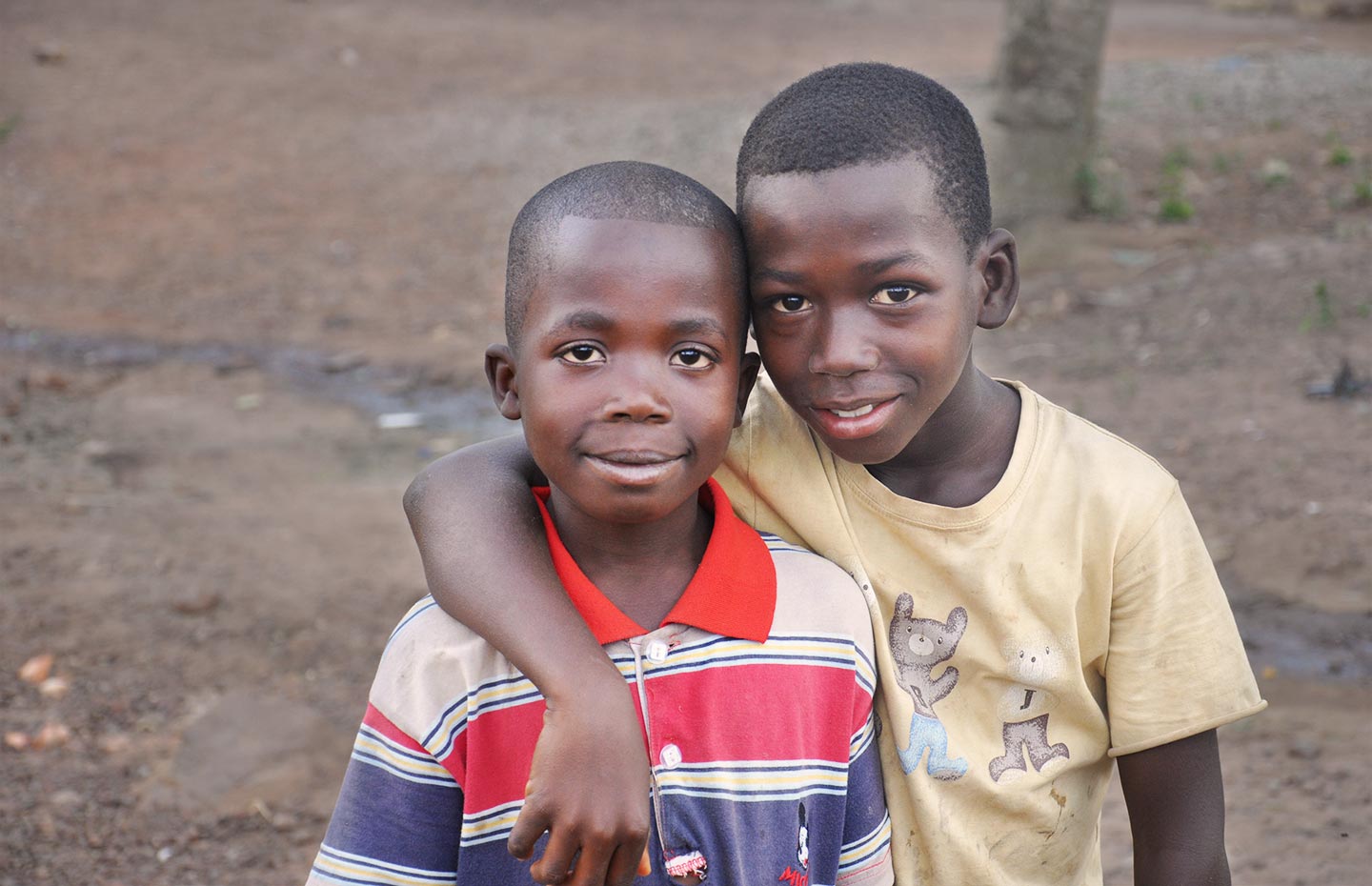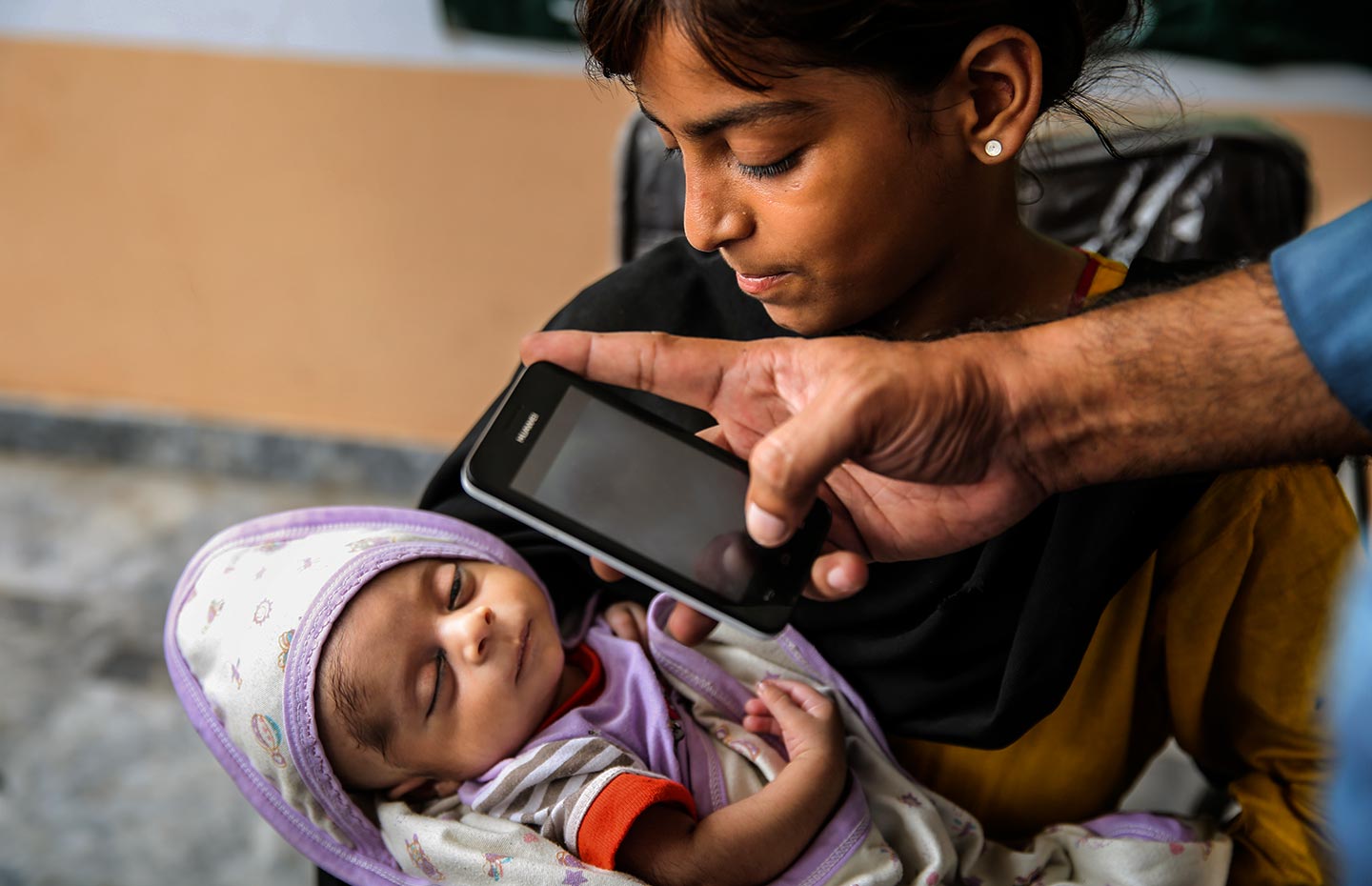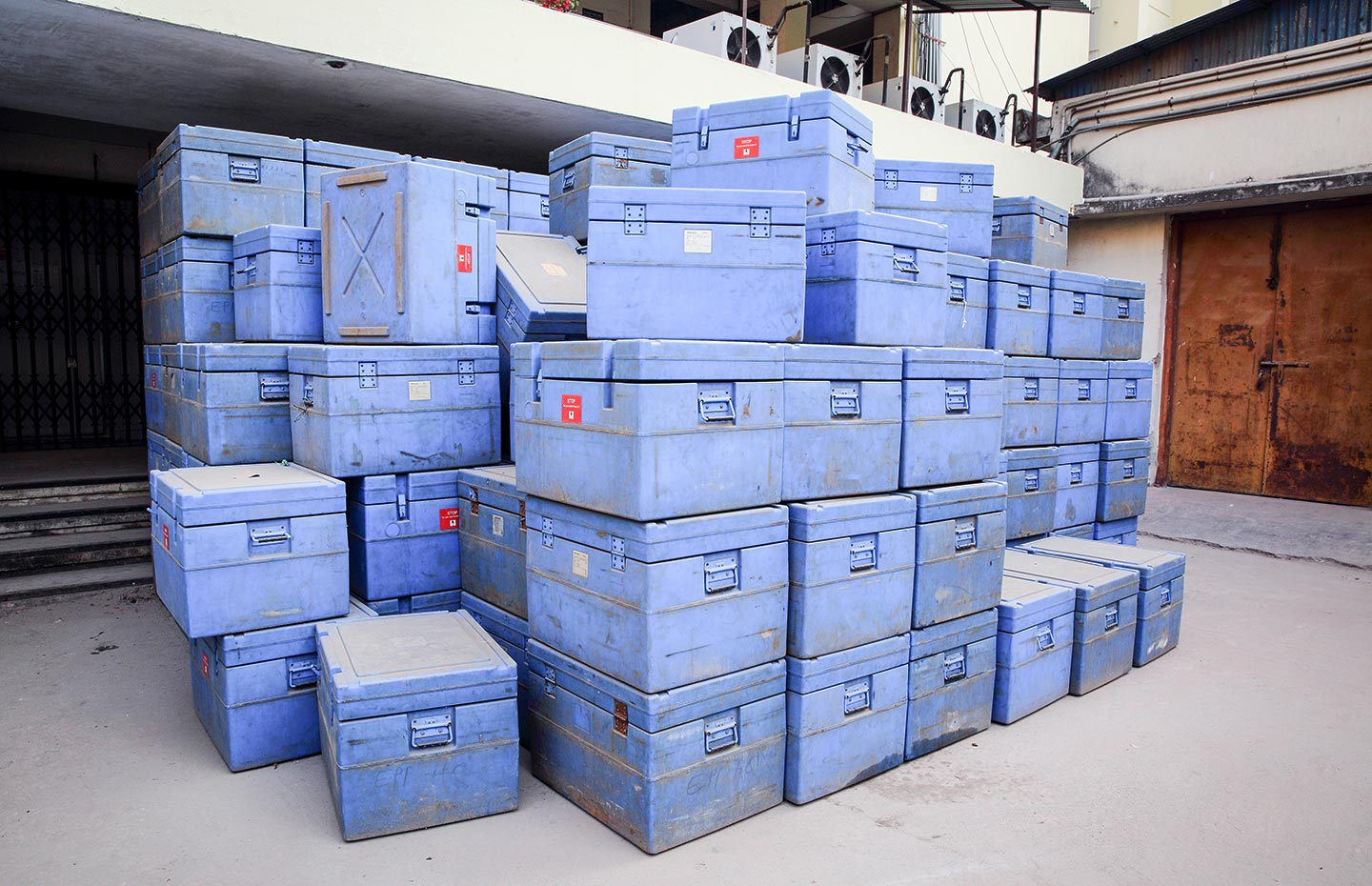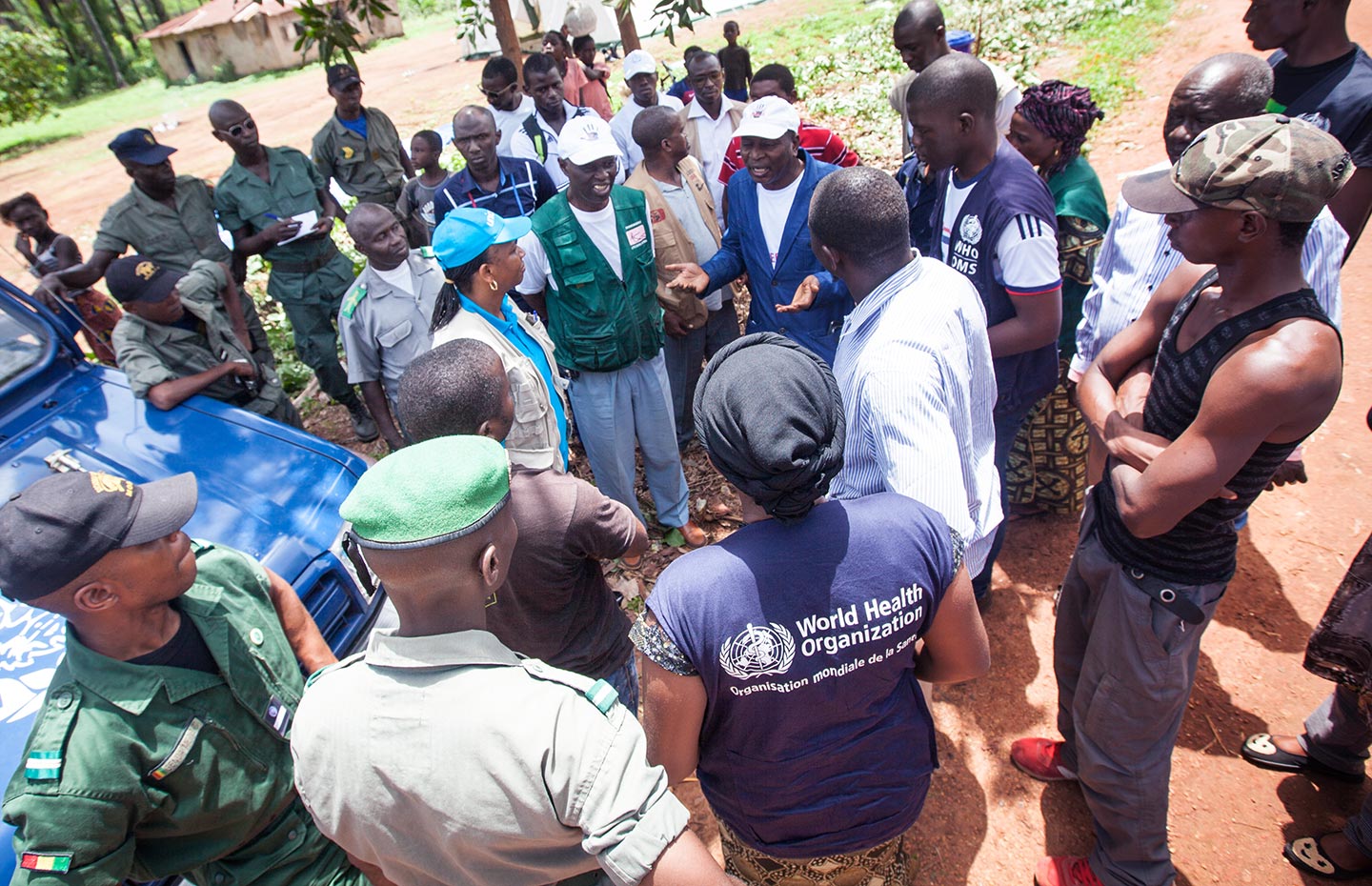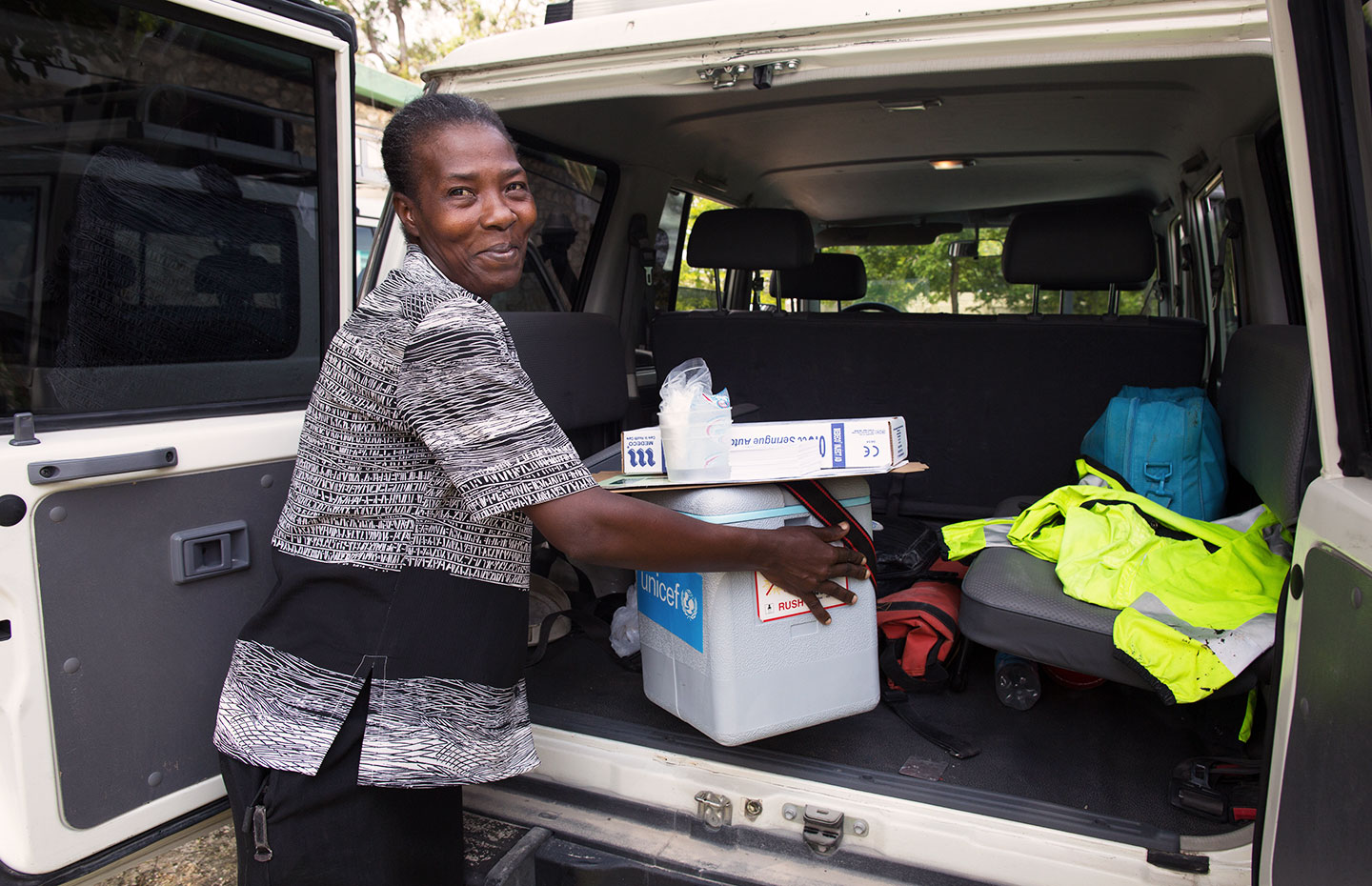In the first two years of our 2016–2020 strategy, we have seen improvements across several areas of our health system strengthening (HSS) efforts. Thirty-four countries have been approved for support for more modern, energy-efficient cold chain equipment through our innovative platform. The proportion of countries of Gavi-supported countries that meet the benchmark for integrated service delivery increased from 32% in 2015 to 44% in 2017.
Still, coverage rates for a full course of basic immunisation in Gavi-supported countries have remained unchanged over the past couple of years. This is a clear indication that some delivery systems are still weak.
Measuring progress
We track our efforts to strengthen health systems through five key indicators:
1. Supply chain performance
This indicator allows countries to evaluate their supply chain performance over time against best practice standards, as well as to identify and respond to shortcomings. It assesses features such as vaccine control, storage capacity, vaccine management, human resources and information systems.
In 2017, Gavi-supported countries received an average score of 68% in WHO’s effective vaccine management assessment, up from 67% in 2016. A target for this indicator will be developed in late 2018.
Read more about Gavi’s supply chain support.
2. Data quality
We measure data quality by tracking the degree of consistency between available estimates of coverage. Read more about our support to improving data quality.
3. Coverage with a first dose of pentavalent vaccine and drop-out rate between the first and third dose
Measuring coverage with a first dose of basic vaccines and the “drop-out” between the first and last dose provides a good indicator of the ability of health services to deliver immunisation services. High first-dose coverage combined with low drop-out rates suggests a strong health system.
Coverage with a first dose of pentavalent vaccine in Gavi-supported countries has remained flat at 86% since 2015. The drop-out rate between the first and third dose was 7%, the same level as in 2016.
4. Integrated health service delivery
This indicator measures the percentage of countries we support meeting our benchmark for integrated delivery of antenatal care and immunisation services. If these services achieve similar levels of coverage, it generally means that the linkages and coordination between them are strong.
In 2017, 44% of Gavi-supported countries met the benchmark for integrated health service delivery – an increase of 10 percentage points from the previous year.
5. Civil society engagement
We use three criteria to assess the level of civil society engagement:
- inclusion of civil society organisations (CSOs) in national immunisation plans with clearly stated activities;
- defined allocations in the EPI budget for CSO plans and activities; and
- documented evidence that CSO plans have been completed and/or are being implemented.
In 2017, 12 (57%) of the 21 Gavi-supported countries for which data was available met all three criteria, up from 40% in 2016. A target for this indicator will be developed in late 2018.
